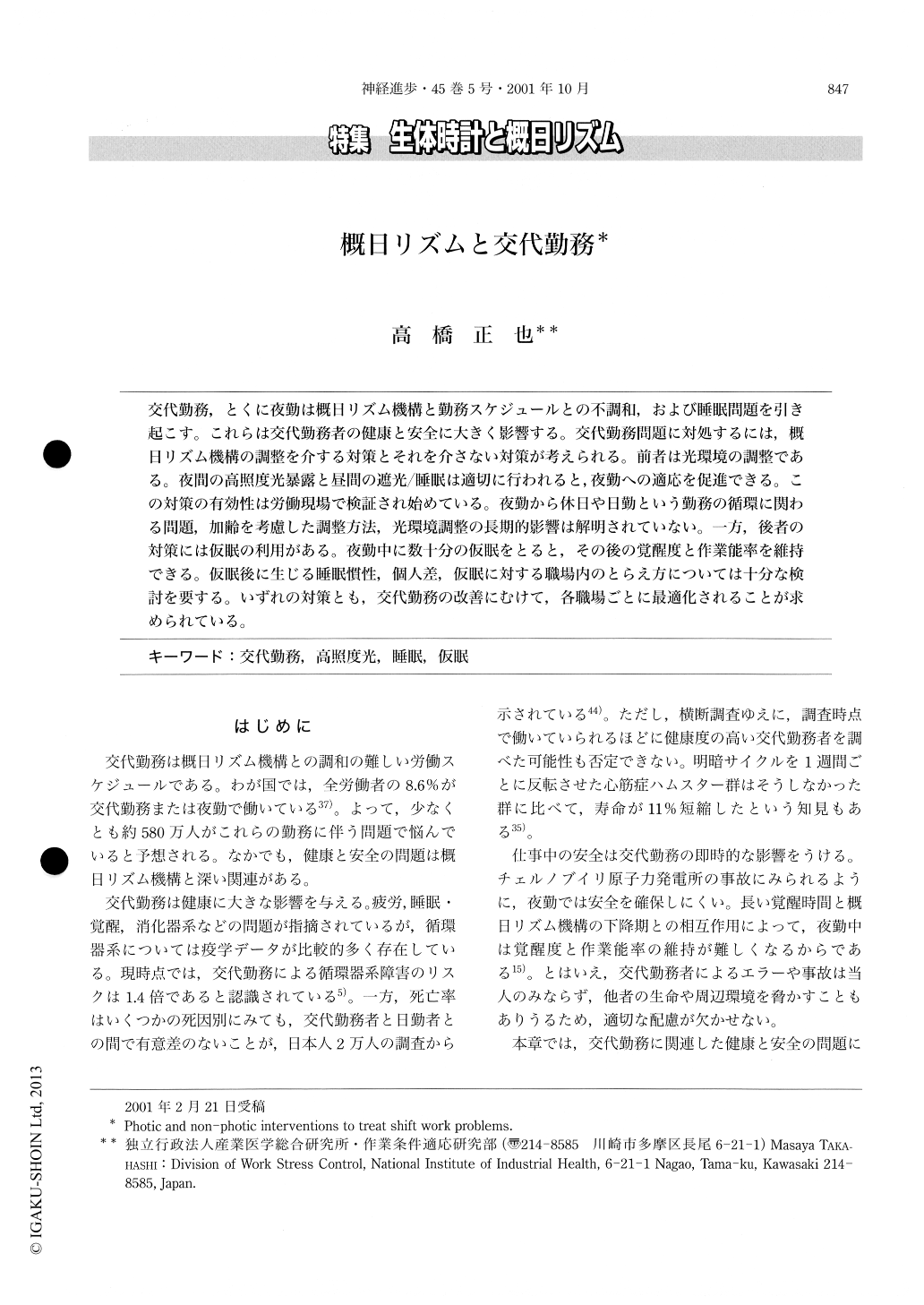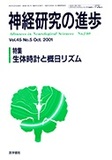Japanese
English
- 有料閲覧
- Abstract 文献概要
- 1ページ目 Look Inside
交代勤務,とくに夜勤は概日リズム機構と勤務スケジュールとの不調和,および睡眠問題を引き起こす。これらは交代勤務者の健康と安全に大きく影響する。交代勤務問題に対処するには,概日リズム機構の調整を介する対策とそれを介さない対策が考えられる。前者は光環境の調整である。夜間の高照度光暴露と昼間の遮光/睡眠は適切に行われると,夜勤への適応を促進できる。この対策の有効性は労働現場で検証され始めている。夜勤から休日や日勤という勤務の循環に関わる問題,加齢を考慮した調整方法,光環境調整の長期的影響は解明されていない。一方,後者の対策には仮眠の利用がある。夜勤中に数十分の仮眠をとると,その後の覚醒度と作業能率を維持できる。仮眠後に生じる睡眠慣性,個人差,仮眠に対する職場内のとらえ方については十分な検討を要する。いずれの対策とも,交代勤務の改簿にむけて,各職場ごとに最適化されることが求められている.
Shift work, night work in particular, induces misalignment between circadian phase and work schedules, and sleep disturbances, leading to health and safety problems. Both photic and non-photic interventions to treat these problems have been suggested. Photic intervention produces adjustment of the circadian system with exposure to bright light at night and darkness/sleep in the daytime. Laboratory research demonstrates that when carefully de-signed, this intervention promotes adaptation to the night shift, improving alertness, performance, and daytime sleep. Recent findings from simulated night shifts also indicate that short (1.5 to 4.0 hours) or intermittent expo-sure to bright light during the night helps to enhance the quality of nighttime job and daytime sleep. Bright light technology has been applied to actual shift work settings. Limited data in such worksite studies have shown in-creased alertness, performance, and daytime sleep after exposure to bright light for less than 1.5 hours during the night shift. Although nighttime exposure to bright light combined with daytime darkness/sleep is highly effective and promising, several questions remain to be answered. Those include the issues of how to produce re-adapta-tion in shift rotation situations, how age-related changes in the circadian system affect such treatment schemes, and possible long-term consequences. The non-photic intervention addressed here is the use of a nap during the night shift. A nap taken for a few hours during the night shift is known to reduce sleepiness and fatigue, and to maintain performance at a satisfactory level. Even a brief (30 to 45 minutes) nap has been reported to enhance subsequent alertness and performance in simulated shift work studies. The effects of a brief nap remain to be con-firmed in the real workplace. The beneficial effects of napping are believed to occur without shifting circadian phase. This may be an advantage to shift workers who rotate rapidly, i. e. working two to three night shifts in a row within a shift cycle. Potential problems associated with napping are sleep inertia after napping and individual differences in response to the nap. Varied attitudes among employers and employees towards napping also may be an obstacle when implementing naps into the workplace. It is recommended that both photic and non-photic strategies discussed in this article be tailored to meet the individual condition of shift work.

Copyright © 2001, Igaku-Shoin Ltd. All rights reserved.


